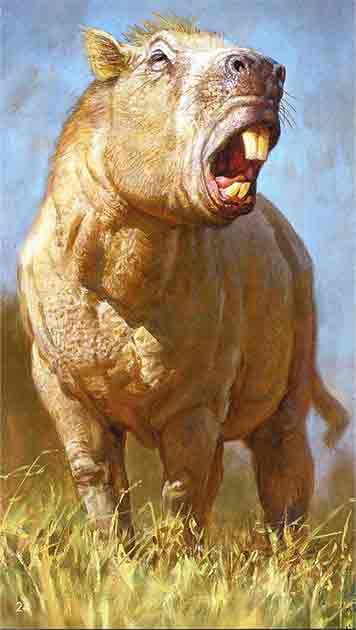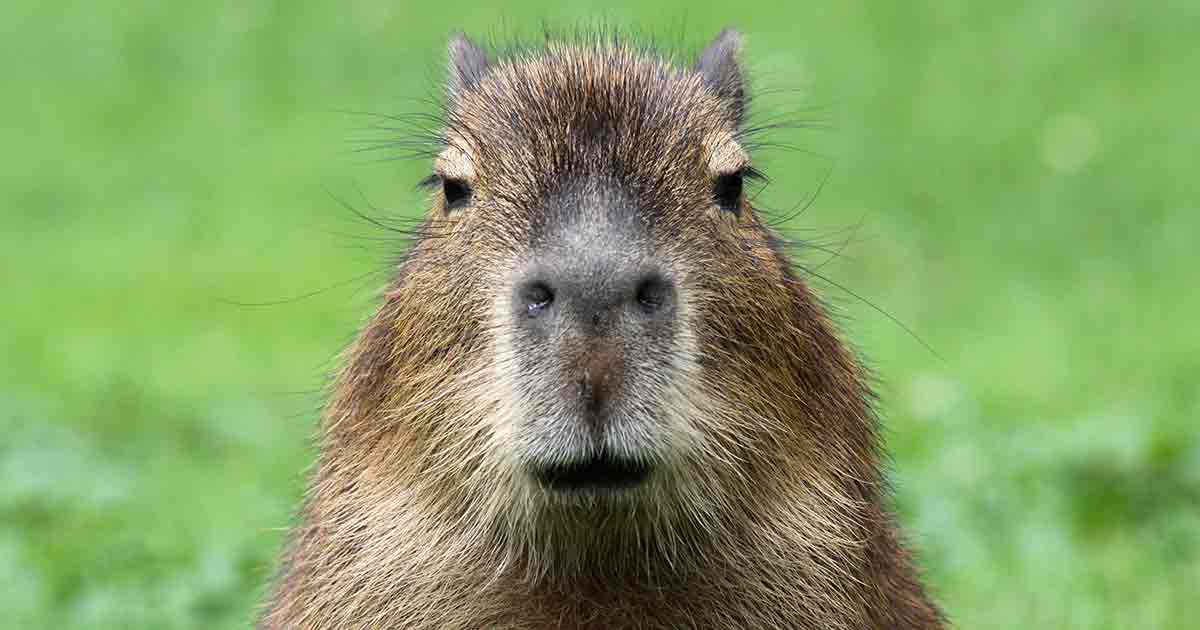Cute and Cuddly Capybaras Are Related to Extinct Colossal Rodents
Native to South America's wetlands, the Capybara is celebrated as the world's largest rodent and revered for its gentle demeanor. Yet, behind its cuddly reputation lies a remarkable connection to an ancient behemoth of the rodent world.
The Surprising Link between Modern-Day Capybaras and Prehistoric Giants
Capybaras are excellent swimmers and can often be found lounging in muddy ponds or meandering along riverbanks in large, close-knit groups. Described as “terminally chill,” in recent years Capybaras have become an online sensation, capturing the hearts of many with their docile nature. They’ve even become the star of the aptly named Capybara Café in Tokyo where they run free and provide healing benefits to customers.
Capybaras ( Hydrochoerus hydrochaeris) are semi-aquatic mammals native to South America, particularly thriving in the lush habitats of the Amazon Rainforest, the Pantanal and other wetland regions. Resembling oversized guinea pigs, these adorable creatures are actually the largest rodents on Earth, weighing between 35 to 90 kilos (77 to 198 lbs).
While the idea of facing such an enormous rodent can be pretty daunting, fossil records reveal that the Capybara pales in comparison to one of its distant relatives. The prehistoric Josephoartigasia monesi holds the title of the largest rodent ever known.
- Does Amazonian Rock Art 'Sistine Chapel' Depict Ice Age Megafauna?
- What Giant Beasts Carved Out these South American Mega-Tunnels?

Artist’s impression of Josephoartigasia monesi, which lived in South America about two to four million years ago and is the largest fossilized rodent ever found. (James Gurney / University of York)
The Secrets of South America’s Giant Rodents
In 2008, Ernesto Blanco and Andrés Rinderknecht discovered a well-preserved fossilized skull in Uruguay which shed light on a previously unknown and extinct giant rodent which they named Josephoartigasia monesi. This ancient rodent was a gargantuan creature which roamed South America during the Pliocene epoch, about two to four million years ago.
Their findings were published in the journal Proceedings of the Royal Society B, where they revealed that Josephoartigasia monesi dwarfed its contemporary counterparts. Comparable in size to a modern-day buffalo, they suggested it weighed around 1,000 kilos (2,200 lbs), making it roughly the size of a small car. However, more recent studies claimed the rodent was closer in size to a small pony and that it weighed around 454 kilos (1,000 lbs).
Whatever its true size, I still wouldn’t want to encounter one during a stroll through South American grasslands. National Geographic reported that Josephoartigasia was a formidable herbivore capable of munching on tough vegetation, with a bite force speculated to have been on par with large crocodilians. This would have helped protect it from predators.
Hailed an incredible discovery, paleontologists are confident that there may be more giant rodents yet to be found. According to the New Scientist, when South America separated from North America about 65 million years ago (after the extinction of the dinosaurs), rodents were able to flourish without competition from other mammals. This allowed for the evolution of diverse rodent species, in all shapes and sizes, including the giant Josephoartigasia monesi. Today, few giant rodents remain in South America; but the most popular of these is the unassuming Capybara.
Top image: Representational image of a Capybara. Source: Henner Damke / Adobe Stock
















